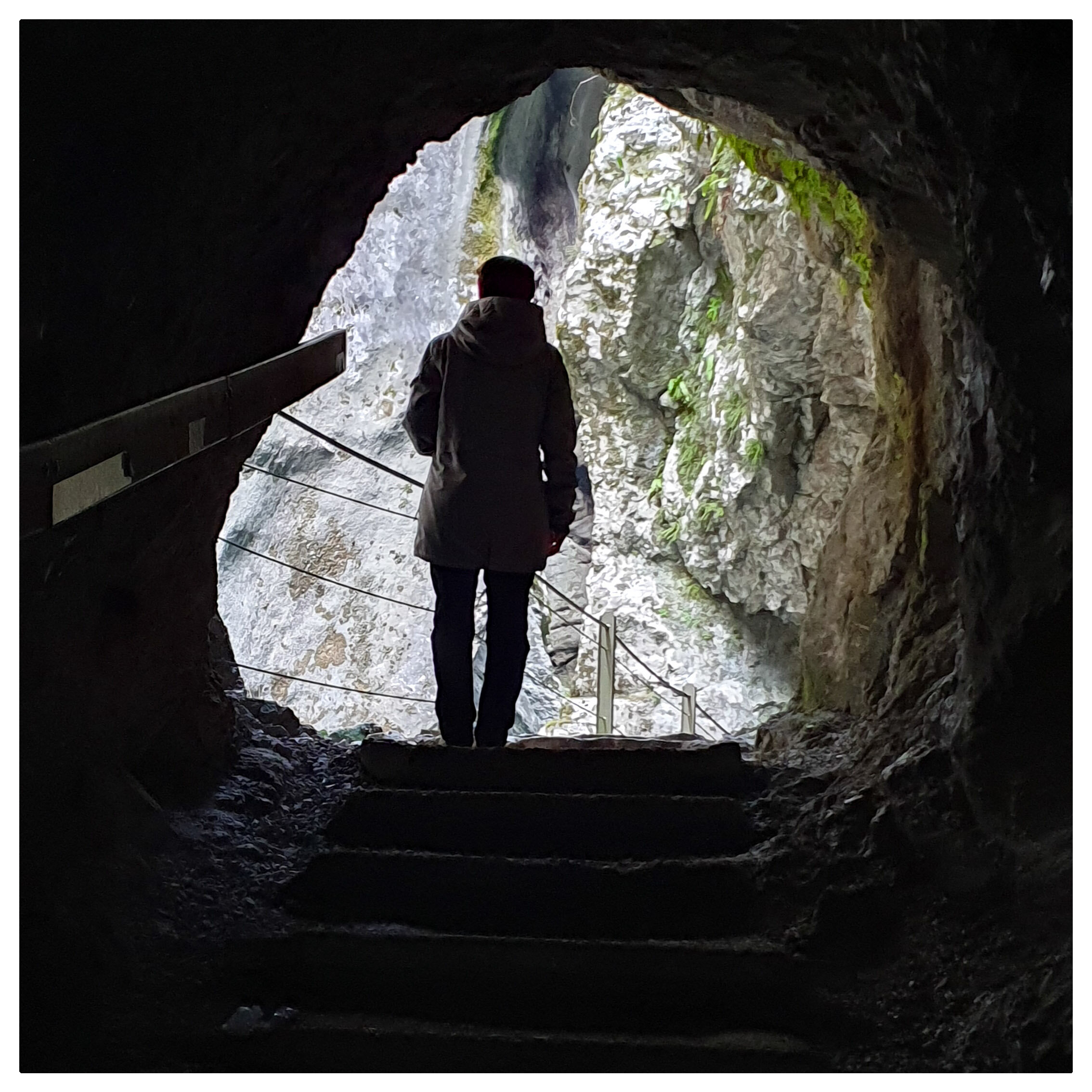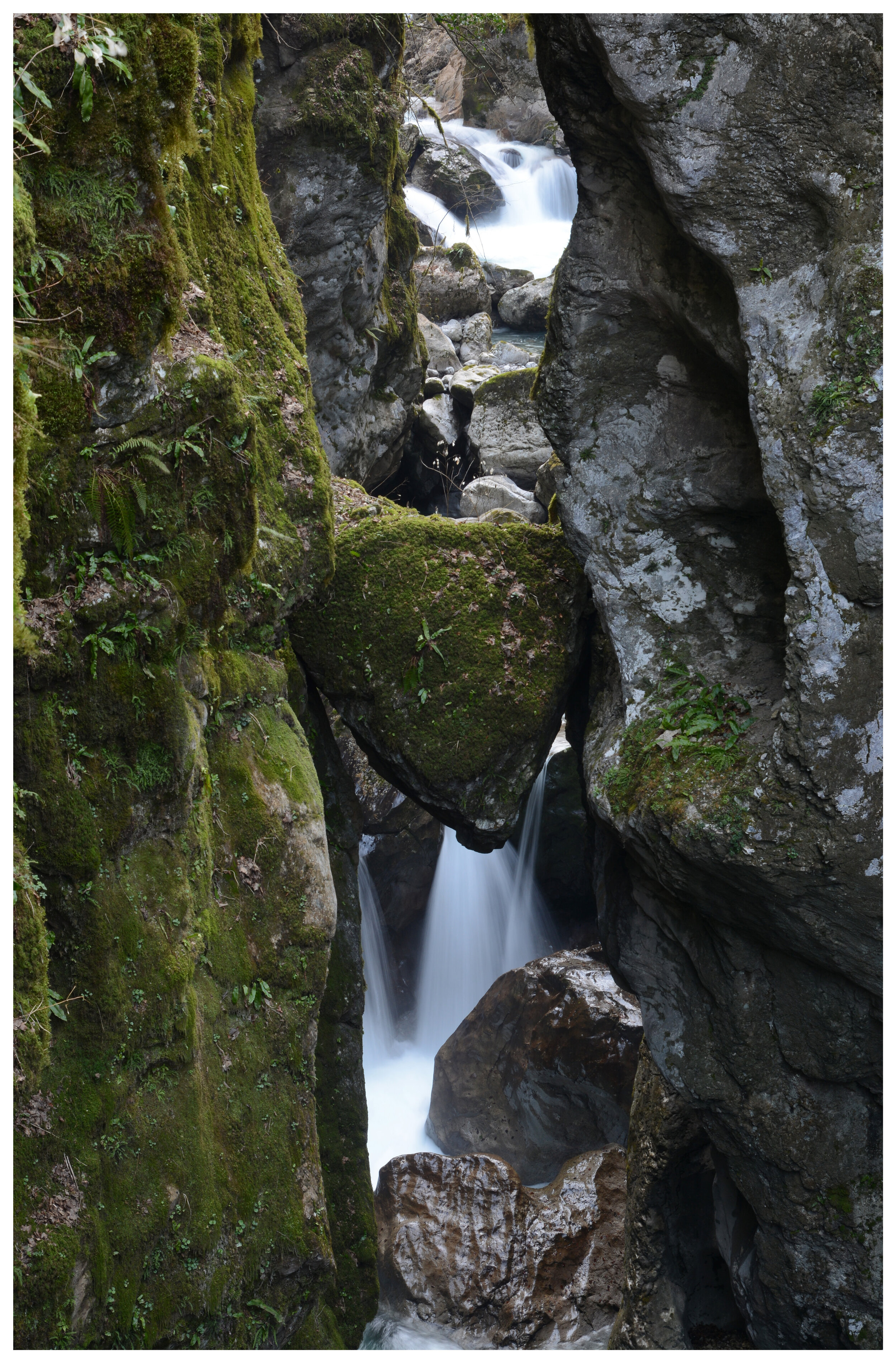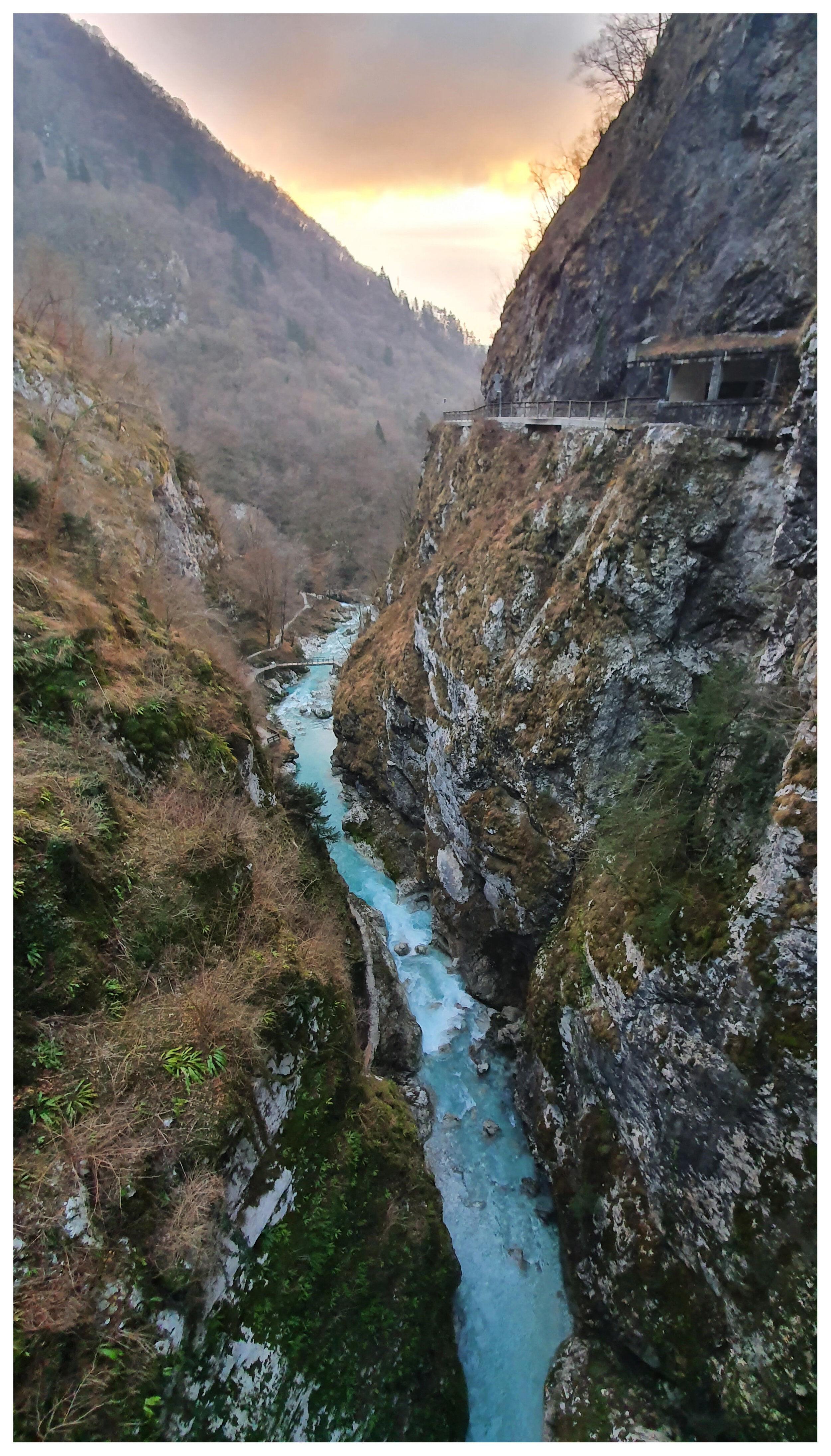Tolmin Gorges: To Hell and Back
Kliknite tukaj za slovenski prevod vsebine bloga
Yes. This post is about Tolmin gorges, one of Tolmin’s main tourist attractions. No. It is not a tip, guide, or a top-five photo spot post. It is a story about the stories of the stories. Old folktales and semi-historical tales that shaped the place and emphasised the many characters of this unique nature. Welcome to the parallel worlds of wild women, devils, and Dante Alighieri’s version of hell.
It took a couple of thousand years for Tolminka and Zadlaščica river to patiently carve the deep and wavy canyons of Tolmin gorges. The crystal clear water surrounded by steep walls covered in green moss, the morning mist above the rivers, the cold breeze, caves, and cascades under the shadow of the Devil’s bridge above it. There is something surreal about it. No wonder this wild, mysterious nature fired-up people’s imagination. Let’s dive right in!
A lot of snot had to be swallowed before the bridges were built
Step by step, the stairs lead you down to the confluence of Tolminka and Zadlaščica river. In the past, there was no bridge, no road connecting Tolmin with the villages on the other side of the river bed. People had no choice but to walk across precipices along dizzying paths or alongside the river, crossing footbridges at the confluence. On the way, they had to pay special attention to avoid any unwanted meetings.
It is well known that many special ladies were running wild around the Soča Valley back in the old days. Unsurprisingly they were called wild women. Duga baba was one of them. With her long, messy, green hair full of lice, her black, sharp nails, a huge crooked nose, smelly breath and scrappy clothes, she was not considered a beauty. Poor thing found shelter in Zadlaška cave above the Tolmin gorges.
But don’t be too quick to feel sorry for her, she was a mischievous witch. Guarding the cave’s entry, she had an overview of the path on the other side of the Tolminka river. Whenever she spotted a foreign person, she ran viciously, crossed the river’s footbridge and waited for the unfortunate chosen one with her favourite demand.
She ordered the newcomer to put her on his shoulders and carry her across the rushing cold water. If the person completed the task successfully, he obtained the right of passage and access to the beautiful gorges. Bravo! But in case the person failed to deliver, Duga baba had another trick up her sleeve. She offered him her daily special: a piece of bread with a spread of fresh slimy snot. Of course, one could not even think about refusing the hospitable gesture. Yummy.
An unsolved story behind the bear’s head
Maybe the message behind this funny story is that you have to be brave in order to experience beauty or you end up with the snot sandwich. But honestly which of the two given options demands more courage? This story also explains why there was no such thing as “too many people” back then.
After a while, the wild lady retired and a wooden statue was built in honour of her life long achievements. It is placed right in front of Zadlaška cave. Now you can simply cross the wooden bridge, enter the wild canyons, and follow the twisting path to admire the colourful thermal spring directly underneath the Devil’s Bridge.
The steep wooden stairs take you up to the raging Zadlaščica cascade. There is another natural occurrence waiting to be explained. Once upon a time, a triangle stone decided to move. On its way towards the river it was jammed between the narrow canyon walls. Stuck in time it formed a natural bridge. The overgrown surface resembles a bear’s head and that became its name. I could not find any specific bear story behind this unique stone, so it remains a mystery.
'Abandon all hope ye who enter here'
Once you arrive at the road it is worth taking a few steps up, to see the source of evil. Zadlaška cave was named by a nearby village Zadlaz and was known as the home of Duga baba. The cave is also known as Dante’s cave.
Legend has it that at the beginning of the 14th century the renewed poet Dante Alighieri visited the Patriarch of Aquileia in Tolmin. During his stay he spent a lot of time exploring the wild gorges and the nearby cave, which served as an inspiration for the Inferno in his poem Divine Comedy. In this section of the poem, Dante describes the nine circles of hell (Radešček 1996, 237).
Whether the story is true or not is a matter of debate but the name stuck. Dante’s cave is considered one of the more demanding tourist caves.
The cave network is 1140 m long, 41 m deep and it has three big halls. Don’t go sneaking inside unprepared and without a guide. No one wants to end up in hell uninvited.
Crossing the sinister bridge
To get out of the demonic place you need to cross the Devil’s bridge. The bridge was first built before the First World War. In 1929, the Italians replaced the original wooden bridge with an iron structure and named it Ponte del Diavolo.
When building the bridges over the narrow and high gorges, the builders preferred to call out for the help of dark angels who seemed to have power over the hellish world (Kozinc 2014, 101). Therefore the bridge got its name but it is not the only one.
Quite a few bridges of the same name were built around Slovenia. It seems like the devil is an impressive businessman with his own bridge-building franchise.
The view from the scenic bridge 60 m high above the narrow gorges is head-spinning. Down below lies the untamed, wild beauty that excites the curious explorers but demands respect. Stories passed down from generation to generation were a reminder of the unpredictable power of nature. It is interesting how all the places with some kind of demonic tales around them are so intriguing. One thing is certain, the devil has a hell of a good taste.











